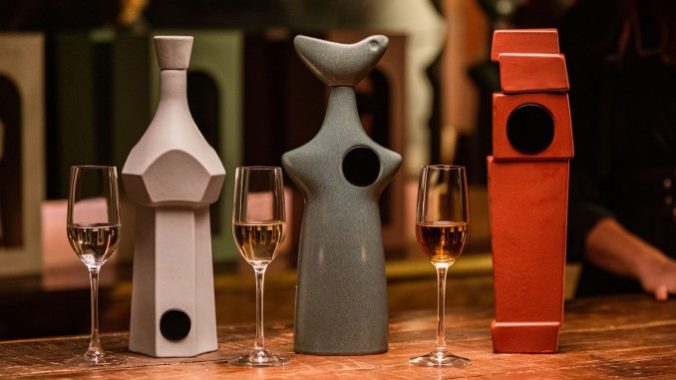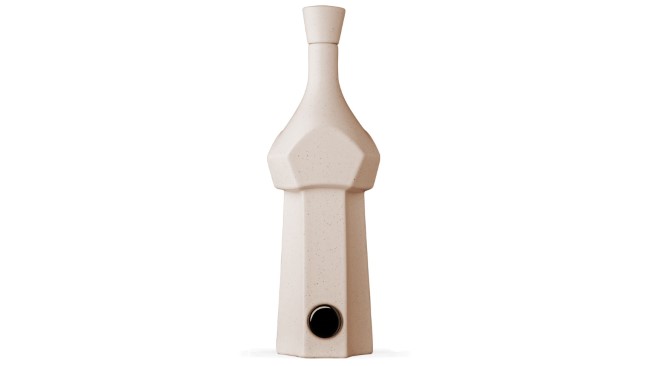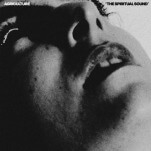Tasting: 3 Tequilas from Casa Obsidiana (Blanco, Reposado, Anejo)
Photos via Casa Obsidiana
I always have a difficult time, as a spirits writer who does a lot of reviews, in approaching a new ultra-premium brand that has clearly put a lot of time and effort into presentation and aesthetic, ultimately passing that cost on to the consumer in the form of sky-high MSRPs. The agave spirits/tequila/mezcal world is packed with brands fitting that description these days, perhaps most famously in the form of something like Clase Azul, a bottle one tends to see enshrined in highly visible spots in cocktail bars or home bars. These brands engender strong feelings from tequila geeks and agave purists, who frequently clash with the collectors about the relative quality or value represented by a brand like Clase Azul, where the bottle and presentation makes up so much of the overall package. And I have a feeling that the new Casa Obsidiana line of tequilas will likely find itself in a similar boat.
This is a new line of three ultra-premium tequilas with MSRPs between $190 and $330, attempting to combine legitimate artistry in spirit construction and aging with a bottle concept that likewise doubles as a piece of modern art. Suffice to say, there’s probably going to be a substantial gulf here between the people who see these bottles and think “that would look good on my bar,” and the people who are far more focused on the liquid inside the bottle. Casa Obsidiana is making an effort to appeal to both, but that’s a very fine and delicate line to walk, when you’re talking about this kind of extreme price point.
So, who is making these tequilas? That would be the famed Beckmann Gonzalez family (Jorge and Roberto), teaming up with master tequilero Francisco Quijano and California/French wine expert and vintner Jean-Charles Boisset. Each Casa Obsidiana brand brings together the spirit from Mexico (distilled at NOM 1513, cooked via autoclave), made from agave grown in the volcanic soil of the Beckmann Gonzales family estate, with variable aging in Jean-Charles Boisset Napa Valley chardonnay casks (French oak). All three expressions are aged in these casks, the difference primarily being the amount of time of their maturation.
The bottles, meanwhile, are beautiful ceramic expressions that are each meant to evoke something in the agave-growing process, with the Blanco being “a rendition of an agave pina,” the Reposado “inspired by water’s fluid movement and gentle shape,” and the red anejo ceramic evoking the iron-rich volcanic soil of the estate. Each is likewise embedded with a piece of volcanic obsidian, as the name would suggest, which is found in that same soil. The company leans into some new age spirituality here, noting that obsidian is “known to cleanse oneself of negative influences,” which is a wonderfully nonsensical thing to write on a bottle containing tequila, which has certainly never been known as a negative influence on anyone, I’m sure you’ll agree.
Looking at these bottles, I can freely admit that they’re visually engaging. But at the same time, you can’t really deny the absurdity of them at the same time, looking more like sculpture pieces you’d see in a local gallery than a bottle housing the product of a commercial tequila brand. Moreover, is there anything on each bottle even acknowledging its status as a liquor bottle? I have only small samples to go off, and I haven’t seen any imagery of the back sides of these bottles, but wouldn’t you expect them to mention the brand name somewhere? Or do those kinds of practical questions just fly out the window when the MSRP goes past $200?
Regardless, it’s about time to taste these Casa Obsidiana Tequila bottles and see how they measure up.
Casa Obsidiana Blanco Tequila
MSRP: $190

The company’s blanco is a little unusual in the sense that it does see some barrel aging, spending a mere 16 days inside the freshly dumped French oak chardonnay barrels. One might naturally wonder just how much character this would really impart on the spirit, but at a mere 40% ABV (80 proof), and a relatively subtle profile, it does manage to stand out even in that short time.
On the nose, this one displays delicate fresh agave, not really “cooked” and more perfumey in nature. I’m getting pink peppercorn and a faint trace of butterscotch that certainly hails from the barrel aging, along with some juicy clementine fruit. There’s no ethanol on the nose to speak of at all, it is extremely light in terms of any alcohol presence. This follows through onto the palate, where the initial first impression is that this blanco is very peppery, evoking lots of freshly cracked black and pink peppercorn. It’s a little odd to have that much pepper paired with zero heat, but the ethanol is very muted, making this effortlessly easy drinking. What it does have is vanilla, a little ginger and a somewhat high level of residual sugar for blanco, which is perhaps unsurprising given the barrel finish.
All in all, it’s a pretty delicate profile that I wouldn’t mind being a bit bolder. This is clearly a blanco meant for neat drinking, as it wouldn’t have the punch to stand up in cocktails, nor would you probably want to throw your $190 bottle at your next margarita.
Casa Obsidiana Reposado Tequila
MSRP: $250

The company’s reposado spends a more substantial four months inside those French oak chardonnay barrels, where it picks up a faint gold coloration. Like the blanco, it gets a considerable amount of barrel character out of a relatively shorter period of aging.
On the nose, the reposado displays a little bit of toffee and something suggestive of glazed nuts, along with orange citrus, vanilla extract and a little more roasted agave. Returning to it, the signature characteristic becomes butterscotch candies, which this has in spades. On the palate it replicates the peppery quality of the blanco, joined by more exotic cardamom and butterscotch. Quite sweet, with a pronounced vanilla cream/cream soda quality as well, it ends with a twist of candied grapefruit.
Like the blanco, the focus here is clearly on neat drinking, and I appreciate that this expression is bringing significantly more flavor to the equation. It is becoming clear here that Casa Obsidiana is meant as more of a “barrel-derived” flavor profile–you need to like the butterscotch/vanilla combo that the chardonnay barrels are bringing to play here, or this isn’t going to be a brand that aligns with your taste. Likewise, this is not exactly an agave purist’s tequila brand, being mostly overtaken by the barrel influences. All in all, though, the reposado is quite a pleasant neat drinking experience, and I think likely stands out as the most balanced of the three expressions here.
Casa Obsidiana Anejo Tequila
MSRP: $330

The brand’s anejo bottling is significantly more mature, having aged for 15 months in the French oak chardonnay barrels. Superficially it represents many of the same qualities as the reposado, but unsurprisingly brings those flavors across much more strongly.
On the nose, this one is heavy on the vanilla bean and caramel, along with rich butterscotch and orange candy, clove and some of the still-surviving pepperiness that seems native to the agave of this brand. On the palate it’s quite sweet, combining an herbal sweetness with lots of caramel and butterscotch, and still pronounced pepperiness. There’s some cooked agave here, but it’s far overshadowed by all the barrel character, which for the first time includes a little tart oak, balanced by toasted marshmallow. A baking spice-forward finish completes the more decadent overall impression.
Overall, these bottles from Casa Obsidiana clearly aren’t for the Friday margarita tequila consumer, but at the same time they’re also not really aimed at the inveterate agave expert. They’re effortless neat drinkers for the consumer who enjoys agave spirits that have been substantially transformed by wine cask aging. That may be a difficult, niche market to exploit, particularly given the price point, but at the very least these are the types of bottles you’re not likely to forget once you’ve seen them.
Jim Vorel is a Paste staff writer and resident beer and liquor geek. You can follow him on Twitter for more drink writing.







































